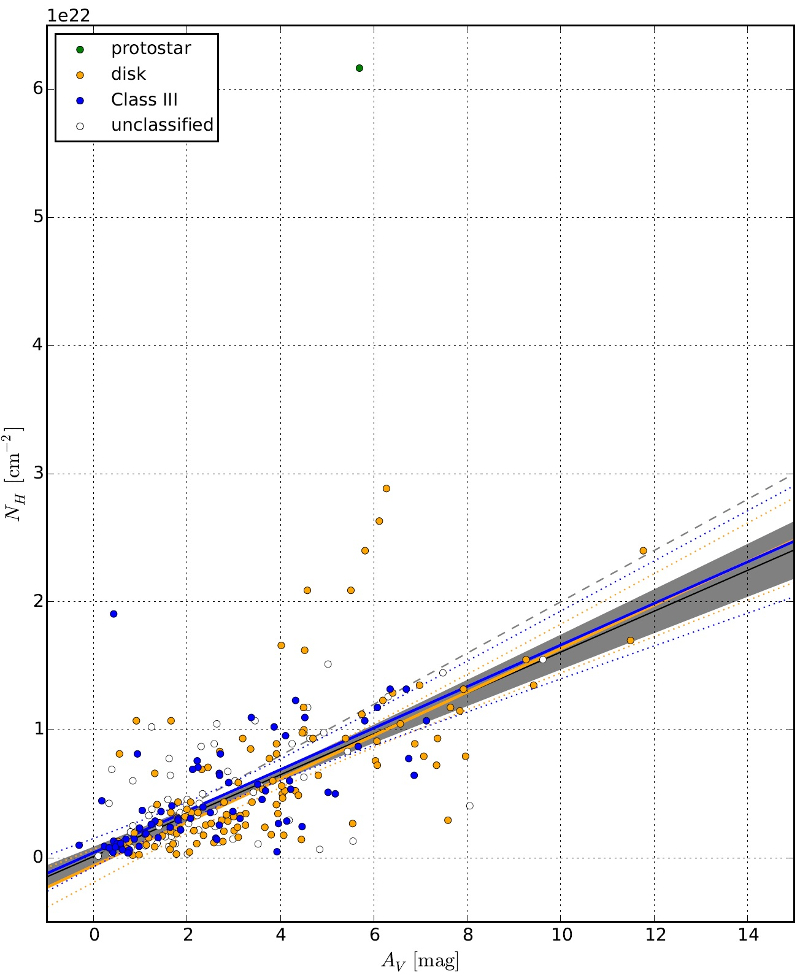| EPoS Contribution |
|
Gas Absorption and Dust Extinction towards the Orion Nebula Cluster
Birgit Hasenberger U Vienna, Vienna, AT | |
| The gas and dust content of the interstellar medium (ISM) can be traced by X-ray and near-infrared absorption, respectively. Previous efforts have shown that star-forming regions are special in this respect by exhibiting a ratio of gas absorption to dust extinction different from the otherwise rather uniform value found in the diffuse ISM of our Galaxy. This quantity can thus aid in deducing fundamental physical properties of the star-forming environment in molecular clouds. We used data from the VISTA and Chandra telescopes to characterise the relation between hydrogen column density NH and dust extinction AV towards young stellar objects in the Orion Nebula Cluster (ONC). From a sample of more than 240 sources, we deduced an NH/AV ratio of (1.37 ± 0.13) x 1021 cm-2 mag-1, approximately 32% lower than the Galactic value. The large sample size and wealth of data sets available in the ONC region additionally enabled us to investigate possible sources of systematic errors which are commonly neglected in this type of study: circumstellar material and the assumed extinction law, X-ray models, and elemental abundances. | |
 | |
| Caption: Hydrogen column density NH versus dust extinction AV in the ONC. The solid black, blue and yellow lines show linear fits to the entire sample, Class-III sources only and IR-excess sources only, respectively. The shaded grey area and the dotted blue and yellow lines correspond to 1-$\sigma$ confidence bands of the fits. The dashed grey line indicates the Galactic NH/AV ratio. | |
| Collaborators: J. Forbrich, U Vienna, AT J. Alves, U Vienna, AT S. Wolk, Harvard-Smithsonian CfA, US S. Meingast, U Vienna, AT |
Suggested Session:
Molecular Clouds |

